Episode 398: Repeating Scientific Names
Description
Thanks to Alexandra, Pranav, Eilee, Conner, and Joel for their suggestions this week!
Velella velella, or by-the-wind-sailor [photo from this page]:
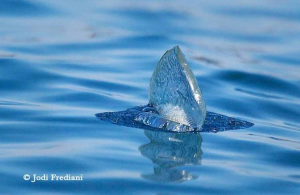
Porpita porpita, or the blue button [photo from this page]:
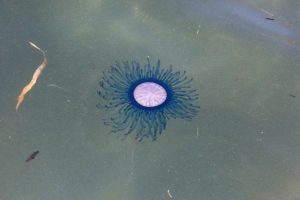
Cricetus cricetus, or the European hamster, next to a golden hamster:
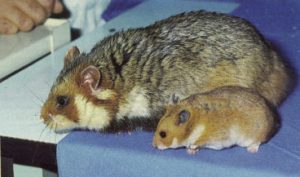
Nasua nasua, or the South American coati [photo from this page]:
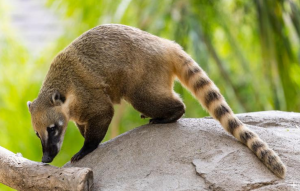
Mola mola, or the ocean sunfish:
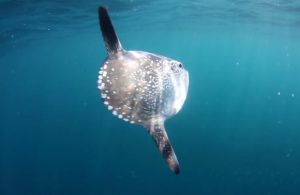
Quelea quelea, or the red-billed quelea [photo from this page]:
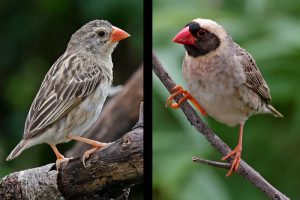
Show transcript:
Welcome to Strange Animals Podcast. I’m your host, Kate Shaw.
This week we’re going to learn a little bit about scientific names, and along the way we’re going to learn about several animals. Thanks to Alexandra, Eilee, Conner, Joel, and Pranav for their suggestions!
Alexandra inspired this episode by suggesting two animals, the by-the-wind-sailor and the blue button. Both are marine invertebrates that look superficially like jellyfish, but they’re actually colonial organisms. That means that although they look like a single animal, they’re actually made up of lots of tiny animals that live together and function as one organism.
The blue button is closely related to the by-the-wind-sailor and both are related to siphonophores. Both the blue button and the by-the-wind-sailor spend most of the time near or on the ocean’s surface and have a gas-filled chamber that helps keep them afloat, with stinging tentacles that hang down into the water, but both are made up of a colony of tiny animals called hydroids. Different hydroids have different functions, and all work together to find tiny food that will benefit the entire colony.
The blue button gets its name because its float is round and flat like a button, and often blue or teal in color. It’s quite small, only a little over an inch across, or about 3 cm, and its tentacles are not much longer. The by-the-wind-sailor is a little larger than the blue button, with a blue sail-shaped float that’s only a few inches across, or maybe 7 cm, with stinging tentacles of about the same size. The stings of both organisms aren’t very strong and aren’t dangerous to humans, but they do hurt, so it’s a good idea not to touch one. Since both can be very common in warm ocean waters and they sometimes get blown ashore by the wind in large numbers, it can be hard to avoid them if you’re visiting the beach at the wrong time. They can still sting you if they’re dead, too.
The by-the-wind sailor has the scientific name of Velella velella while the blue button’s scientific name is Porpita porpita. The term for a scientific name that contains the same words is a repeating scientific name, also called a tautonym or tautonymous name, and that’s the subject of this episode.
A scientific name is something we mention a lot but if you’re not sure what it means, it can sound confusing. Every organism with a scientific name has been described by a scientist, meaning it’s been studied and placed somewhere in the great interconnected web of life. The system of giving organisms scientific names is called binomial nomenclature. The first word of the name indicates which genus the organism belongs to, while the second word indicates what species it is. These are called generic and specific names. Some organisms also have a third word in their scientific name which indicates its subspecies.
The reason scientists use a complicated naming system is to make it easier for other scientists to know exactly what organism is being discussed. For example, let’s say a scientist has been studying hamsters in the wild to learn more about them, and publishes a paper about her observations. If she just calls the animal a hamster, someone reading it might assume she was talking about the hamster found in their part of the world, when the paper is actually about a totally different, although closely related, hamster that lives somewhere else. And that brings us to Pranav’s suggestion, the European hamster, whose scientific name is Cricetus cricetus [cry-SEE-tus].
The hamster most of us are familiar with is actually the golden hamster, also called the Syrian hamster, more properly called Mesocricetus auratus. That’s the most common species kept as a pet. We can learn from the different scientific names that the European hamster is in a different genus from the golden hamster, which usually means it’s pretty different in some significant ways.
The European hamster lives throughout parts of Eurasia, especially eastern Europe through central Asia, and used to be extremely common. It’s also called the black-bellied hamster because the fur on its underside is black, while the fur on its upper side is tan or brown with white markings. These days it’s critically endangered due to habitat loss and being killed by farmers who think it hurts their crops. It does eat seeds, vegetables, and some roots, but it also eats grass and many other plants that are considered weeds, as well as insects, including insects that farmers also don’t want in their gardens.
In many respects, the European hamster is a lot like the golden hamster. It carries food home to its burrow in its cheek pouches and stores food in a larder. It hibernates in cold weather but wakes up around once a week to have a snack from its larder, which honestly sounds like the best way to spend the winter. But the European hamster is larger than the golden hamster. Like, a lot larger. The golden hamster is maybe 5 inches long, or 13 cm, which is small enough that you can easily hold it in your hand. The European hamster grows up to 14 inches long, or 35 cm. That’s the size of a small domestic cat, but with a short little hamster tail and short little hamster legs.
Even though an organism’s scientific name only designates genus and species, and subspecies when applicable, it allows scie





